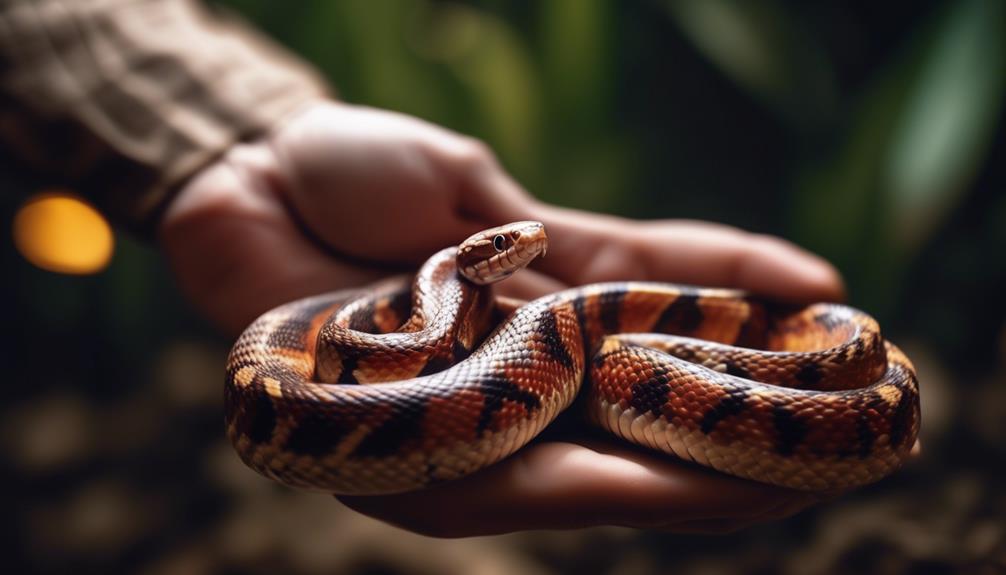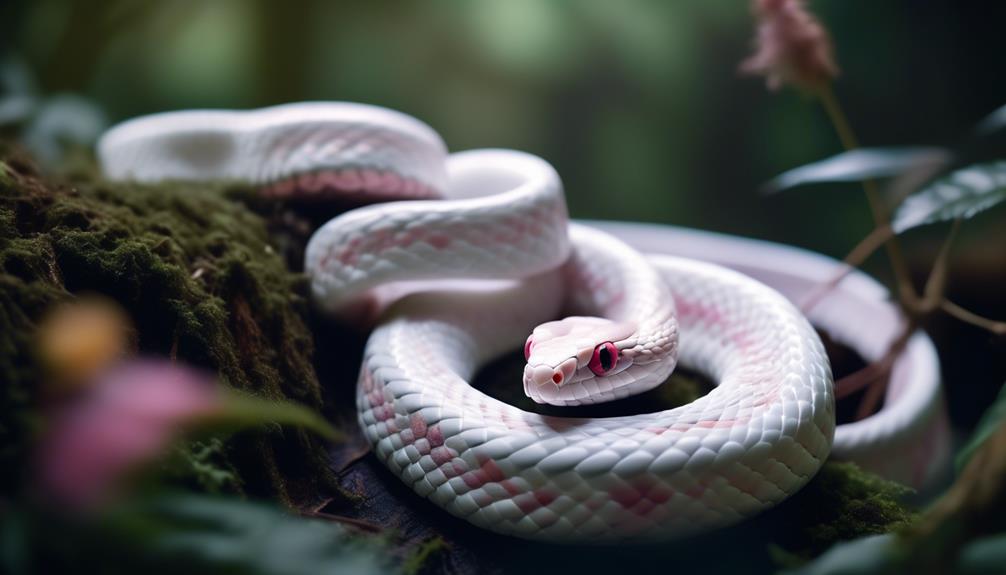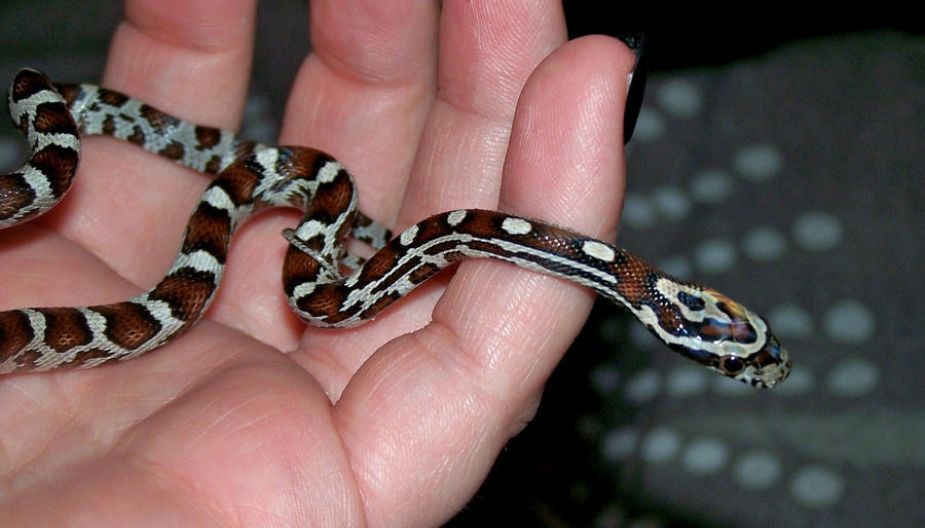Have you ever wondered what it takes to care for a corn snake? You may have questions about their diet, behavior, or ideal habitat. Whether you're a seasoned snake owner or considering bringing a corn snake into your home for the first time, having all the facts is essential.
In this comprehensive guide, we'll address all your burning questions about corn snakes, from their feeding habits to their breeding and reproduction.
So, if you want to ensure that your corn snake thrives in your care, stay tuned for expert insights and practical tips that will help you become a knowledgeable and responsible corn snake owner.
Corn Snake Diet and Feeding
To ensure the health and well-being of your corn snake, it's crucial to maintain a proper diet consisting primarily of rodents and occasionally small birds. These dietary requirements are essential for meeting the nutritional needs of your snake.
When feeding your corn snake, it's important to provide prey items that are appropriately sized. The size of the prey should be about the same width as the widest part of your snake's body to prevent choking or regurgitation. Additionally, the prey should be no wider than the snake's head to ensure safe consumption.
When considering snake feeding, it's important to note that live prey can pose risks to your corn snake, as they can cause injury to the snake during feeding. Therefore, it's recommended to feed pre-killed prey to your corn snake. This not only reduces the risk of injury to your snake but also allows you to monitor the feeding process closely.
Understanding and meeting the dietary requirements of your corn snake is crucial for its overall health and longevity. By providing a proper diet and ensuring safe feeding practices, you can contribute to the well-being of your snake.
Understanding Corn Snake Behavior
Understanding the behavior of corn snakes is essential for their proper care and handling as captive reptiles. When it comes to handling techniques, it's important to approach your corn snake calmly and confidently. Always support their body to make them feel secure, as they may become stressed if they feel insecure. Avoid sudden movements, especially during handling, as this can startle them.
Additionally, it's crucial to provide environmental enrichment in their enclosure. Corn snakes are active, curious creatures, so incorporating climbing branches, hiding spots, and various textures within their habitat can help stimulate their natural behaviors. This can include providing branches for climbing, artificial plants for hiding, and different substrate materials for burrowing.
Environmental enrichment not only promotes physical exercise but also encourages mental stimulation, which is vital for their overall well-being. By understanding and providing for their behavioral needs, you can ensure that your corn snake remains healthy and content in captivity.
Creating the Ideal Corn Snake Habitat
When considering the creation of an ideal habitat for your corn snake, it's crucial to provide environmental enrichment that supports their natural behaviors, such as climbing, hiding, and burrowing, thus promoting their overall well-being in captivity.
Temperature regulation is essential for corn snakes as they require a thermal gradient in their enclosure. This means providing a heat source at one end, such as an under-tank heating pad or a ceramic heat emitter, to create a warm area for basking and a cooler area at the opposite end. This setup allows your snake to move between different temperature zones, mimicking their natural behavior in the wild.
Enclosure design is also vital. A spacious and secure enclosure is necessary to ensure the well-being of your corn snake. A 20-gallon long tank is suitable for juveniles, while adults will require at least a 40-gallon breeder tank. It's important to provide multiple hiding spots, such as reptile caves or hollow logs, to help reduce stress and make your snake feel secure. Additionally, incorporating branches and structures for climbing will encourage natural behaviors and provide enrichment.
Health and Care Tips for Corn Snakes
For optimal health and care of your corn snake, maintaining proper temperature and humidity levels in the enclosure is crucial. Corn snakes are ectothermic, which means they rely on their environment to regulate their body temperature. Here are some essential health and care tips to ensure your corn snake thrives:
- Temperature Regulation: Keep the ambient temperature in the enclosure between 75-85°F (24-29°C) and provide a warmer spot of 85-88°F (29-31°C) for basking. Use a thermostat-controlled heating pad or heat tape to maintain these temperatures.
- Humidity Levels: Maintain a humidity level between 40-60% for most of the time. During shedding, increase the humidity to 60-70% to aid in the shedding process.
- Handling Stress: Minimize handling during feeding and shedding periods as it can cause stress. When handling, support the snake's body to make it feel secure and reduce stress.
- Shedding Process: Ensure a suitable humidity level during shedding to assist in the process. Offer a rough surface, such as a piece of bark or a reptile shedding box, to help the snake remove its old skin.
- Regular Health Checks: Monitor your snake's eating habits, weight, and behavior to detect any signs of illness early on.
Breeding and Reproduction of Corn Snakes
Breeding corn snakes involves carefully managing environmental conditions and introducing compatible individuals for successful reproduction. The process requires an understanding of breeding techniques and reproductive cycles to ensure the health and viability of the offspring. Corn snakes typically reach sexual maturity at 3-4 years of age and breed annually, with the female laying a clutch of eggs after a successful mating.
| Breeding Techniques | Reproductive Cycles |
|---|---|
| Introducing compatible individuals | Breeding annually |
| Managing environmental conditions | Sexual maturity at 3-4 years |
| Monitoring mating behavior | Female lays clutch of eggs after mating |
To initiate breeding, it's crucial to simulate natural environmental conditions by adjusting temperature and photoperiod. When introducing compatible mates, observe their behavior closely to ensure successful copulation. Once the female lays her eggs, provide a suitable incubation environment to maximize hatching success. Understanding these breeding techniques and reproductive cycles is essential for successfully breeding corn snakes and contributing to their conservation.
Conclusion
In conclusion, you now possess an encyclopedic knowledge of corn snakes. You're practically a corn snake whisperer, equipped with the expertise to handle any corn snake-related situation.
From their diet and behavior to their habitat and health, you're a corn snake aficionado. Armed with this wealth of information, you're ready to conquer the world of corn snakes with confidence and finesse.
Congratulations, you're now a corn snake guru!


